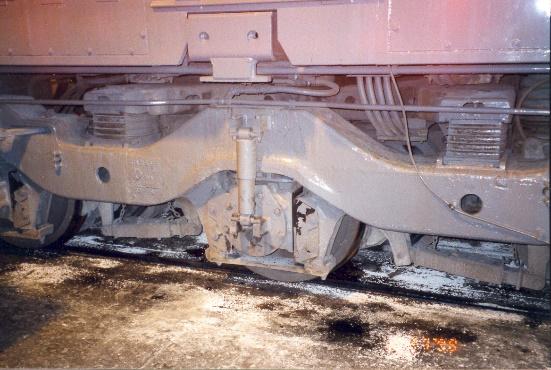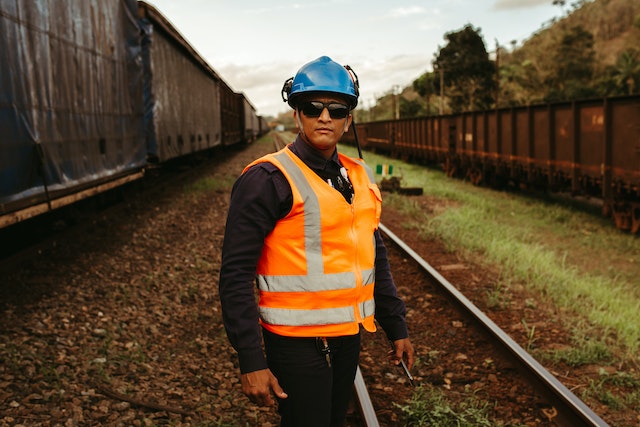Commuter railroads, such as Long Island Railroad, Metro-North, and NJ Transit, serve different functions than freight railroads, and with that comes a slightly different workforce. They employ workers to perform tasks that freight railroads do not. One of these positions is a car appearance maintainer (“CAM”), or “coach cleaner.” A car appearance maintainer, or coach cleaner, is responsible for all things related to the upkeep, cleanliness, and appearance of passenger cars. The specific duties of a railroad car appearance maintainer can include:
- Cleaning the Interior: This involves sweeping, vacuuming, wiping down seats, cleaning windows, and maintaining the overall cleanliness of passenger cars, including restrooms and common areas.
- Cleaning the Exterior: The exterior of the cars, including windows, doors, and wheels, needs regular cleaning to prevent the buildup of dirt, grime, and weather-related elements that can cause damage or wear.
- Maintaining Vehicle Appearance: This includes washing the train cars and making minor repairs, such as touching up paint or addressing small dents and scratches to ensure the cars look presentable.
- Inspecting for Damage: A car appearance maintainer may also check for any damage to the car’s body or interior that needs to be reported for repairs.
- Performing Light Maintenance: They may be involved in performing simple maintenance tasks to keep the car in good operational condition, such as checking for proper seat functionality or cleaning and maintaining HVAC systems.
The position requires employees to work in all weather conditions, both indoors and outdoors, in and around trains and live third rail. These workers have to constantly retrieve, utilize, and return various tools and equipment, such as brooms, mops, buckets, wringers, spreaders, shovels, scrapers, snow blowers, power washers, and general maintenance materials in dangerous environments in various yards and terminals. These supplies are sometimes kept outdoors in poorly maintained shipping containers known as “Conex boxes.”
Due to the nature of this work, these workers are at risk for many different types of injuries. The most common of these are slips, trips, and falls. While a slip, trip, or fall may seem minor, in a railroad environment, it can have devastating consequences and often lead to permanent disabilities that prevent a worker from returning to work and earning a living. Other common injuries that car appearance maintainers often encounter include:
- Cuts and Abrasions
- Risk factors: Sharp edges on the exterior of cars, tools, or materials used for repairs.
- Potential injuries: Lacerations, puncture wounds, and skin abrasions.
- Crush Injuries
- Risk factors: Working in tight spaces around rail cars or while moving between cars, especially when cars are coupled or uncoupled.
- Potential injuries: Crushing of fingers, hands, or legs, leading to fractures or amputation.
- Acute and Repetitive Strain Injuries
- Risk factors: Repetitive tasks such as scraping, painting, or using heavy tools.
- Potential injuries: Tendonitis, carpal tunnel syndrome, and other musculoskeletal injuries.
- Heat Stress or Exhaustion
- Risk factors: Working in extreme heat or under the sun for long hours, especially when working outside on the cars.
- Potential injuries: Heat exhaustion, dehydration, and heatstroke.
- Falls from Heights
- Risk factors: Climbing ladders, walking on top of cars, or inspecting high points of the cars.
- Potential injuries: Broken bones, spinal injuries, or head trauma from falls.
- Electrical Shock
- Risk factors: Proximity to electrical components, including lights, sensors, and other equipment.
- Potential injuries: Burns, heart problems, and nervous system damage from electric shock.
- Injuries from Moving Train Cars
- Risk factors: While performing maintenance on cars that are stationary or during coupling/uncoupling operations, workers can be injured by moving cars.
- Potential injuries: Broken bones, internal injuries, or even fatal accidents.
- Overexertion/lifting injuries
- Risk factors: Lifting heavy tools, equipment, or parts of the railcar.
- Potential injuries: Back strains, muscle pulls, and herniated discs.
With so many CAM workers/coach cleaners employed throughout the Country’s commuter rail systems, it is no surprise that the attorneys at Doran & Murphy have represented car appearance maintainers for a wide variety of workplace injuries. No matter what craft you work in (CAM, engineer, conductor, oiler, carman, electrician, trackman/maintenance of way, etc.), if you’ve been injured on the job working for a commuter railroad such as Long Island Railroad, Metro-North, and NJ Transit, call us today for a free consultation.




